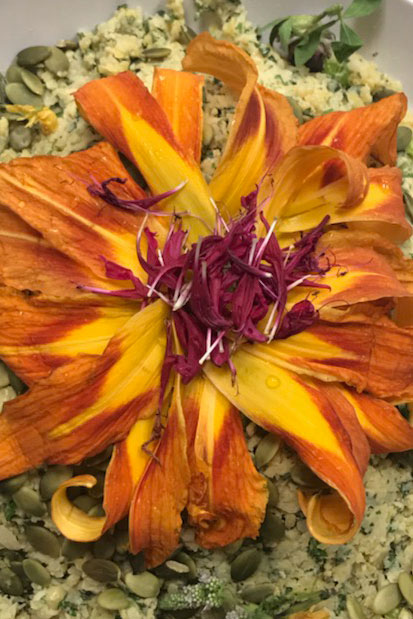Foraging
Wild foods connect us to the world we inhabit, helping us to honor and value the living systems on which we depend. Foraging offers safe, economical, and nutritious food. Our world is inhabited by many plants with a long history of human use.
We Evolved to Forage
As young children we spend years crawling on the ground with a tendency to taste everything within reach. This human characteristic prepares us to have the literacy to recognize plants as food and medicine as we mature. We can rediscover this capacity in our modern environment.
Wild edible foods are readily distributed by people in our ordinary movements through the landscape. While some foraged fare can be found in the deep woods, most wild foods can be found in close proximity to human activity. Food grows in the faded shadows of our footsteps.
Wild Food Benefits
|
Industrial Food Concerns
|
Cool-season Foraging
Look for leafy greens and shoots of the following wild plants when they are vibrant and stretchable during the cool seasons. If the greens are tough or coarse, or the plant has shifted its energy into the flowers, the greens are often no longer palatable and sometimes unsafe. The following leaves and shoots are easy to identify.
asparagus
basswood
beebalm
beech
chickweed
chicory*
clover
dandelion*
dock*
garlic mustard
ground ivy
hairy bittercress
henbit
mallow
mugwort
plantain
purple deadnettle
redbud
sassafras
sheep sorrel
shepherd's purse
stinging nettle
violet
wild bergamot
wild lettuce
wild onion
wood sorrel*
* High oxalates.
Flowers make a bright garnish, bulking agent in salads, or flavorful appetizers. Gather at the height of bloom.
basswood
beebalm
black locust
chickweed
chicory*
clover
dandelion*
daylily
evening primrose
garlic mustard
ground ivy
hairy bittercress
henbit
mallow
purple deadnettle
redbud
violet
wild lettuce
wild bergamot
wild onion
wood sorrel*
* High oxalates.
High in energy, winter foods help humans store fat to get through winter.
acorns
black walnuts
chestnuts
chinquapins
hazelnuts
Jerusalem artichokes
hickory nuts
maple syrup
pawpaws
pecans
persimmons
rose hips
spicebush
Warm-Season Foraging
After the spring equinox, late season annual plants emerge and bask in the lengthening days.
amaranth*
clover
evening primrose
goldenrod
hibiscus
lambsquarters*
milkweed
pepperweed
pineappleweed
purslane*
sassafras
yarrow
* High oxalates.
Enjoy fresh fruits in season.
aronia
beach plum
blackberry
black cherry
black raspberry*
blueberry
elderberry
grape
mulberry
red raspberry
passionflower
strawberry
sumac*
wineberry
* High oxalates.
** Avoid if allergic to cashews.
Best Practices in Foraging and Wildcrafting
Meet the Family
Plants can be easily recognized by learning similar growth characteristics shared by their botanical relatives. Check out the books Botany in a Day or Shanleya's Quest by wild foods instructor Thomas Elpel for examples of this method.
Family Patterns
Plants in the mint, mallow, and mustard families are generally safe to consume, and a great starting place for beginners.
Plants in the carrot family can have highly poisonous lookalikes.
The amaranth, buckwheat, purslane, and wood sorrel families tend to have plants that are high in oxalates, and ought to be consumed in moderation.
Use Scientific Names
Plants have a variety of common names, which can cause confusion when it comes to identification. Learn the family, genus, and species of each plant you decide to eat.
